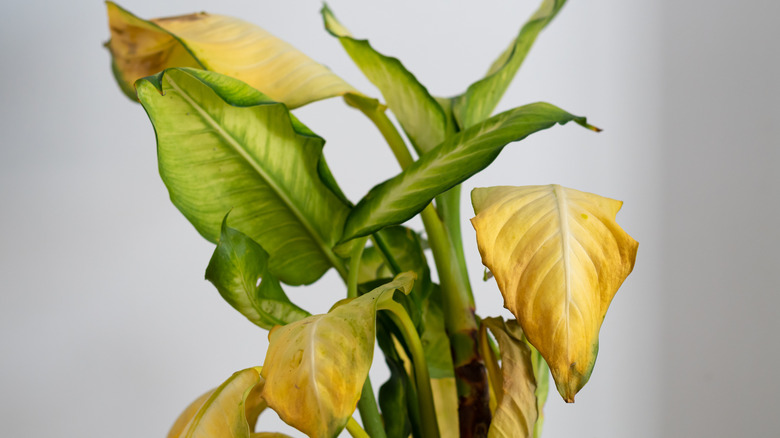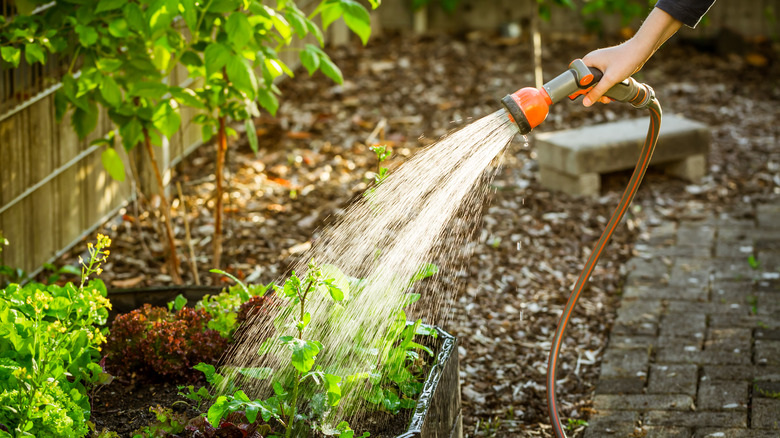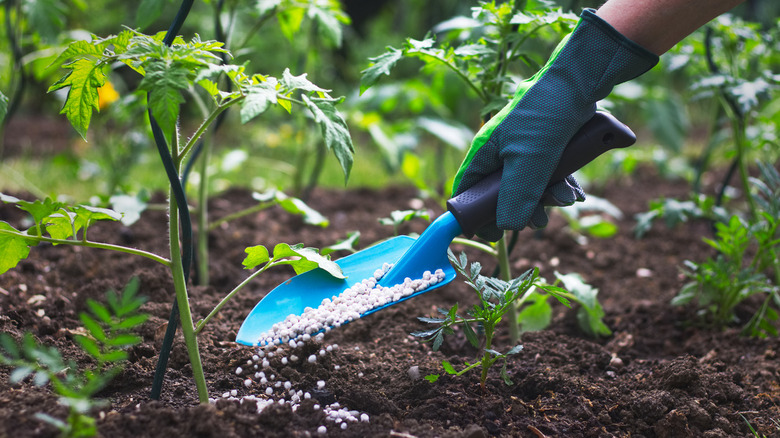Your Garden May Be Trying To Tell You Something If It Looks Like This
Whether indoor or outdoor, gardening is a fantastic hobby. For those who don't have a natural green thumb, it can seem incredibly daunting to learn the rules of gardening since they vary depending on what plant you're growing, where you're growing it, your climate, etc.
That being said, plants are living organisms; like any other living organism, they respond to their environment. If they are in a healthy and thriving environment, they'll let you know by rewarding you with bountiful crop loads, beautiful flowers, and lush plants. They'll also let you know if they're lacking something through various visual and behavioral cues.
One of the most common visual symptoms of an unhappy plant is the leaves turning yellow, according to Ambius. Yellowing leaves aren't just unattractive; they're often a sign that something is wrong. If the leaves end up dying, it could also attract bugs to the debris in your home and garden. Luckily, yellowing leaves significantly narrow down the list of potential ailments.
Water
Yellowing leaves on your plant is a major sign of a watering issue. Pennington states that both overwatering and underwatering your plants will result in yellowing leaves — as will inadequate drainage. Plants require sun and water, but they also need to be able to breathe. They breathe through their roots, so if the roots are compromised, they essentially start to suffocate and can't produce green leaves anymore in their survival state.
If you overwater your plants, you flood the root system, essentially drowning your plant. If you have improper drainage, you also flood the root system, just slower, as it can't properly get rid of excess water. On the other hand, underwatering will result in your plants suffocating as well, as the dry roots start to die and seize up.
While there are a few rules to follow to avoid over or underwatering, like checking to see if the soil's dry, weight tests, etc., these are usually very subjective. Beginner and advanced gardeners alike may find this rule difficult to follow. Instead, you can opt for a moisture meter to tell you when it's time to water. If your issue is drainage, opt for better draining soil, a pot with more holes, or adding soil amendments like sand or gravel.
Lack of nutrients
While yellowing leaves can signify a few different issues, the second most common reason is that the plant has insufficient nutrients. As Mind Body Green points out, plants can only produce chlorophyll — the chemical that makes leaves green — if they have enough nutrients. Specifically, most plants need iron and manganese. If there aren't enough nutrients in the soil, the plant will start to lose pigmentation and eventually turn yellow. The leaves will also likely die off or be otherwise misshapen. Fertilizing once every few months with a slow-release fertilizer tailored to your plant's needs is always a good idea.
That being said, yellow leaves are also a sign of over-fertilizing, according to Ambius. While fertilizer can help stimulate growth, it can't do it overnight. Some eager gardeners may overload their plant with fertilizer in hopes it will rapidly speed up growth, but this will result in an unhealthy plant. Just like eating too little or too much can cause health issues for humans, it can cause problems in plants. While you should fertilize regularly, you shouldn't be too heavy-handed.


